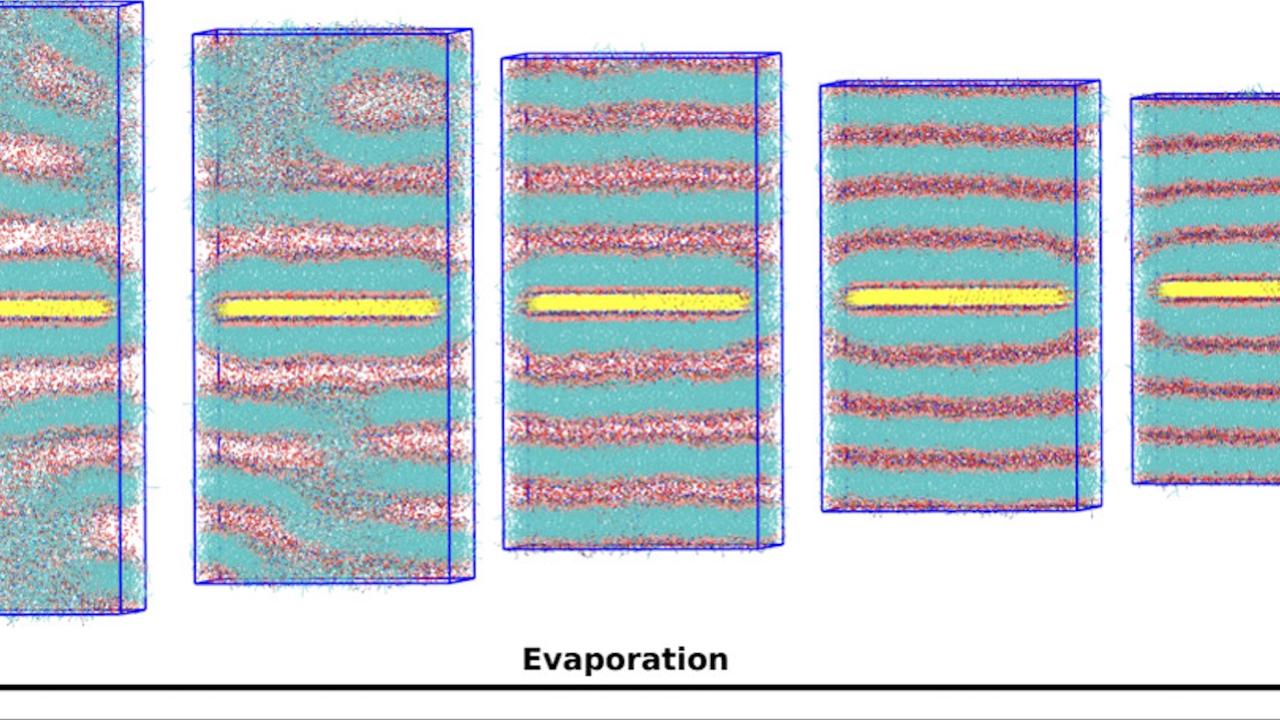
Bradley S. Harris, Yuqi Huang, Arpad Karsai, Wan-Chih Su, Pallavi D. Sambre, Atul N. Parikh, Gang-Yu Liu, Roland Faller, Langmuir 38, 7545-7557 (2022)
Molecular dynamics (MD) simulations in the MARTINI model are used to study the assembly of 1-palmitoyl-2-oleoylphosphatidylcholine (POPC) molecules under spatial confinement, such as during solvent evaporation from ultrasmall (femtoliter quantity) droplets. The impact of surface polarity on molecular assembly is discussed in detail. To the best of our knowledge, this work represents the first of its kind. Our results reveal that solvent evaporation gives rise to the formation of well-defined stacks of lipid bilayers in a smectic alignment. These smectic mesophases form on both polar and nonpolar surfaces but with a notable distinction. On polar surfaces, the director of the stack is oriented perpendicular to the support surface. By contrast, the stacks orient at an angle on the nonpolar surfaces. The packing of head groups on surfaces and lipid molecular mobility exhibits significant differences as surface polarity changes. The role of glycerol in the assembly and stability is also revealed. The insights revealed from the simulation have a significant impact on additive manufacturing, biomaterials, model membranes, and engineering protocells. For example, POPC assemblies via evaporation of ultrasmall droplets were produced and characterized. The trends compare well with the bilayer stack models. The surface polarity influences the local morphology and structures at the interfaces, which could be rationalized via the molecule-surface interactions observed from simulations.
DOI: 10.1021/acs.langmuir.2c00636